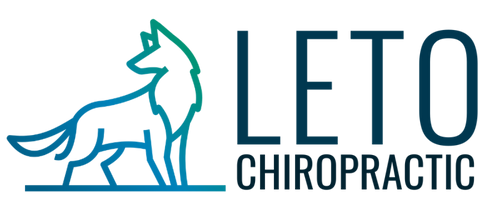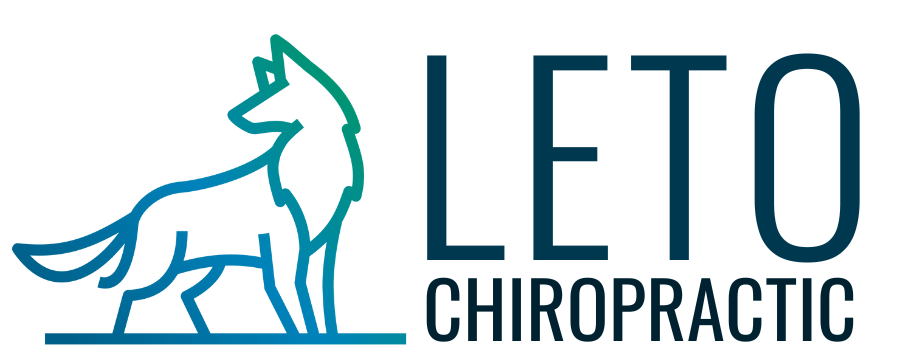The 6 Pillars of Health
We all want to be in a good state of health. Moving ourselves from Point A, where we are currently, to Point B, where we would like to see ourselves can seem like a confusing and daunting task. When you consider the vast amounts of information that is readily at our fingertips, consuming information on any topic can feel more like drinking from a fire hose.
What are we to do? Simplify the subject by starting with basic principles.
In our office we talk a lot about health and strategies around obtaining a greater state of health. We believe that 99% of health comes down to 6 broad categories, we call these ‘The 6 Pillars of Health’. The other 1% would be your genes or genetic makeup, which in reality you don’t have much control over, so let's focus on what you can control. In this article you will learn what are the 6 Pillars of Health (brief summary) and how you can get started by implementing new health strategies into your life.
Pillar #1 - The Nervous System
We’re a little biased with this first one but we would challenge anyone to argue against this being an important pillar of health. The Nervous System is often referred to as the Master Control System of the human body. It basically connects and communicates with every other system. Each pillar here contributes to a successful and well functioning Nervous System. Chiropractors are great at removing any interference that may be present in your Nervous System so it can function better. Step 1 would be to find a great Chiropractor and start taking your spinal health seriously.
Pillar #2 - Movement
Movement is life. Adopting a consistent movement practice is absolutely critical for an optimal functioning human being. What this movement practice looks like can have a dramatic range depending on a number of things such as your age, medical history, injuries and goals, to name a few. Movement practices can range from something intense like Crossfit workouts 5+ times per week or something simple yet highly beneficial such as walking every single day. We like to recommend options that have the least amount of friction and require the least amount of motivation to complete. Walking therefore is our number one recommended form of movement because it doesn’t require much to do, just throw on your shoes and get moving. The goal is to walk a minimum of 1 hour per day, but depending on your current fitness level and/or injuries you may only manage 5-20 minutes per day. Start where you can and build from there!
Pillar #3 - Nutrition
Everything you eat is either moving you towards a better state of health or a lesser state of health. We eat to provide our body with the building blocks of life. Fancy science talk would refer to these as macronutrients such as protein, fats and carbohydrates, or micronutrients which are all the essential minerals and vitamins your body needs. All of these nutrients are required for all the different processes that happen in the background to keep your body functioning optimally. We always recommend eating real, whole foods with minimal processing. Think of how many steps your food takes before it gets to your plate - less steps are better. How do you implement this pillar? Try by shopping on the outside perimeter of your grocery store and avoid as much of the canned and boxed things on the shelves that are typically highly processed.
Pillar #4 - Recovery
This is an often neglected side of health in our culture. We prioritize sweating and working hard but don’t pay the recovery process the respect that it’s due. Movement and exercise is designed to break down your body intentionally so that it has an opportunity to grow back stronger. Recovery therefore is critical to becoming a stronger, more resilient and higher functioning human. We talk a lot about optimizing your sleep, morning/night routines, myofascial release practice, cold plunges, infrared saunas, breathwork and sensory deprivation tanks. Pick one from this list (hint: start with sleep) and become more intentional around how you will incorporate this into your routine.
Pillar #5 - Mental Health
Mental Health is a broad topic that is getting a lot more attention today than it did even 10 years ago. When we discuss Mental Health we’re referring more to the anxiety and stress that is experienced by many people day-to-day. Obviously Mental Health encompasses far more than just stress and anxiety, and those cases may require further resources and strategies. This pillar is also heavily influenced by the actions and steps that are taken in every other pillar that we have listed here. Where does one start? One big thing that is recommended in our office is daily journaling. This small but very effective exercise helps us review our day, process our thoughts and feelings, and really just dump all the stuff floating around in our mind onto paper where it can live. Let’s make this process even easier to start. At the end of the day, before you go to sleep, simply list 3 wins that you had that day and 3 wins that you would like to see happen tomorrow. This 2 minute exercise helps us to reflect and feel gratitude while simultaneously setting an aim or focus for the following day. Build your journaling practice from here!
Pillar #6 - Self-Governance
Finally, Pillar #6, Self-Governance. How well do you manage yourself? You are the captain of your own ship and therefore you decide the direction that your life takes. What are the daily decisions that you have to make and are they moving you towards a better state of health and well-being? Have you even given this any thought? This pillar is about becoming more proactive and less reactive in your life. This pillar can arguably be ranked higher than any other pillar because it directly relates to and influences each other pillar. How can you act on Pillar #6? Put together a plan, even if it’s bad or incomplete. What you will find once you start taking action is that the plan will start becoming more refined and focused. Plan one small action that you can take starting today in each pillar. Keeping it simple to start will help ensure that you do it daily. If 6 small steps (6 Pillars) seem daunting, start with just one and build from there. You got this!

